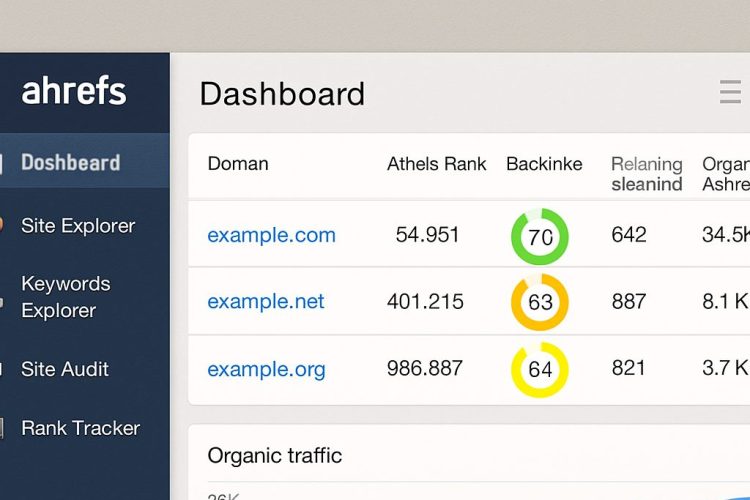
In today’s digital landscape, video marketing has become an essential tool for businesses looking to boost engagement and drive sales. With the rise of social media platforms and the increasing consumption of video content, businesses can no longer afford to overlook the power of video marketing. In this article, we will explore how to create an effective video marketing plan, understand the importance of video marketing, and learn strategies to maximize engagement through video content.

Increased Engagement
Videos capture attention quickly and are more likely to be shared than other forms of content. The dynamic nature of videos can draw viewers in, keeping them engaged longer than static content. They provide a multi-sensory experience that can trigger emotions and prompt viewers to take action. Sharing is a natural extension of engagement, and videos have a viral potential that can significantly amplify your message.
Improved SEO
Video content can improve your website’s search engine ranking and increase visibility. Search engines prioritize content that keeps users engaged, and videos often have higher engagement metrics. Embedding videos on your website can reduce bounce rates and increase the time users spend on your site. Additionally, properly optimized videos can rank in video search results, providing another avenue for visibility.
Higher Conversion Rates
Videos can lead to higher conversion rates by providing a clear and persuasive message. By showcasing products in action or explaining complex concepts visually, videos can simplify the decision-making process for potential customers. They can serve as a virtual salesperson, addressing potential objections and guiding viewers through the buyer’s journey. The inclusion of a strong call-to-action can further drive conversions.
Better Retention
Viewers tend to retain information better when presented in video format. The combination of visual and auditory cues helps reinforce the message, making it more memorable. Videos can break down complex information into digestible segments, aiding comprehension and recall. This enhanced retention means viewers are more likely to remember your brand and message, leading to increased brand awareness over time.
Creating a Video Marketing Plan
To succeed in video marketing, you need a well-thought-out plan. Here’s how to create one:
Setting Goals for Video Marketing
Start by defining what you want to achieve with your video marketing efforts. Are you looking to increase brand awareness, generate leads, or boost sales? Setting clear objectives will guide your video content strategy and help you measure success. Consider aligning your goals with broader business objectives to ensure your video marketing efforts contribute to overall growth. Establishing measurable KPIs will enable you to track progress and make data-driven adjustments.
Identifying Your Target Audience
Understanding your target audience is crucial for creating content that resonates with them. Consider their demographics, interests, and pain points. This information will help you tailor your videos to meet their needs and preferences. Conduct audience research to gather insights into their content consumption habits and preferred platforms. Creating audience personas can provide a detailed picture of who you’re targeting, guiding both content creation and distribution strategies.
Choosing the Right Platforms

Developing a Video Marketing Strategy
Once you have set your goals and identified your audience, it’s time to develop a strategy. This includes deciding on the types of videos to create, the tone and style of your content, and how often you’ll post. Define a content calendar to ensure consistent posting and alignment with other marketing activities. Consider integrating video marketing with other channels to create a cohesive brand experience. Leverage analytics to refine your strategy over time and maximize ROI.
Types of Video Content
There are several types of video content you can create to engage your audience:
Product Demos
Showcase your products and highlight their features and benefits. Demonstrating real-world applications can help potential customers visualize using your products. Consider including testimonials or case studies to provide additional credibility. Focus on the unique selling points that differentiate your product from competitors.
Testimonials
Share customer stories and experiences to build trust and credibility. Featuring real customers can humanize your brand and create an emotional connection with your audience. Ensure testimonials are authentic and relatable to resonate with viewers. Consider using a diverse range of testimonials to appeal to different segments of your audience.
How-to Videos
Provide valuable information and demonstrate how to use your products. How-to videos can position your brand as an industry expert, building trust and authority. Break down complex processes into easy-to-follow steps to enhance understanding. Encourage viewers to share their experiences or tips, fostering community engagement.
Behind-the-Scenes
Give your audience a glimpse into your company culture and operations. Behind-the-scenes content can humanize your brand and create a sense of transparency. Highlighting your team and workplace can foster a deeper connection with your audience. Use this content to showcase your values and build a relatable brand image.
Live Videos
Engage with your audience in real-time and answer their questions. Live videos can create a sense of urgency and exclusivity, driving higher engagement rates. Use live content to host Q&A sessions, product launches, or special events. Encourage audience interaction through comments and questions to foster real-time engagement.
Aligning Video Content with Marketing Objectives
Your video content should align with your overall marketing objectives. For example, if your goal is to increase brand awareness, focus on creating videos that tell your brand story and highlight your values. If you’re aiming for lead generation, create videos with a strong call-to-action that encourages viewers to take the next step. Consistently review and adjust your content to ensure alignment with evolving objectives. Collaborate with cross-functional teams to integrate video marketing with broader marketing initiatives.
Video Marketing Tips and Techniques
Optimize for SEO
Video SEO is crucial for ensuring your content is discoverable. Use relevant keywords in your video titles, descriptions, and tags. Additionally, include transcripts and closed captions to make your videos accessible and improve searchability. Optimize thumbnails to attract clicks and accurately represent your content. Regularly update and refresh older videos to maintain relevance and SEO value.
Engage with Your Audience
Encourage viewers to engage with your content by asking questions, prompting them to leave comments, and responding to their feedback. This interaction can help build a community around your brand and foster loyalty. Use engagement metrics to assess the effectiveness of your content and inform future strategies. Consider creating interactive videos that invite viewer participation through polls or quizzes.
Analyze Performance

Regularly analyze your video marketing performance using analytics tools. Track metrics such as views, watch time, engagement rates, and conversion rates to understand what’s working and what needs improvement. Use this data to refine your strategy and optimize future videos. Consider conducting A/B testing to experiment with different content variations and identify the most effective approaches.
Experiment with Different Formats
Don’t be afraid to experiment with different video formats and styles. Test short-form videos, like Instagram Stories or TikTok clips, alongside longer-form content like webinars or tutorials. This variety keeps your audience engaged and helps you reach different segments of your audience. Stay informed about emerging trends and platforms to capitalize on new opportunities. Regularly solicit audience feedback to guide experimentation and inform content planning.
The Power of Social Video Marketing
Social media platforms are ideal for video marketing because they encourage sharing and interaction. Here’s how to leverage social media video marketing effectively:
Create Shareable Content
Focus on creating videos that are entertaining, informative, or inspiring. Shareable content increases your reach and attracts new audiences. Encourage sharing by incorporating social sharing buttons and prompts within your videos. Consider collaborating with other brands or influencers to expand your reach and tap into new audiences.
Utilize Paid Advertising
Consider using paid advertising to boost your video content’s visibility on social media platforms. This approach can help you target specific demographics and increase engagement. Use audience segmentation to tailor ads to different user groups and maximize impact. Monitor ad performance closely to optimize campaigns and achieve the best ROI.
Collaborate with Influencers
Partnering with influencers can amplify your reach and lend credibility to your brand. Choose influencers whose values align with yours and who have an engaged following. Leverage their unique voice and expertise to create authentic content that resonates with your target audience. Establish clear objectives and deliverables for influencer partnerships to ensure mutual success.
Conclusion: The Importance of Video Marketing
Video marketing is a powerful tool for businesses looking to increase engagement, improve SEO, and drive sales. By developing a strategic video marketing plan, creating compelling content, and leveraging the power of social media, you can maximize your reach and achieve your marketing objectives. Remember, the key to successful video marketing is to stay authentic, understand your audience, and continuously analyze and refine your strategy.
Incorporate these strategies into your marketing efforts and watch as your business reaps the benefits of increased engagement and growth through video marketing. Stay committed to innovation and experimentation to keep your content fresh and relevant in an ever-evolving digital landscape.


